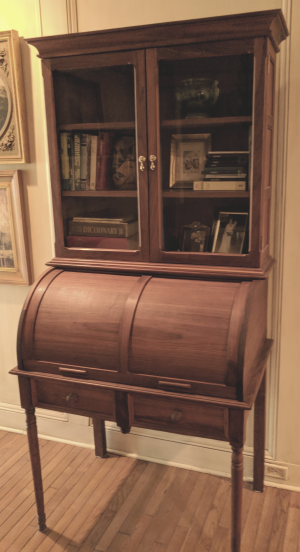Maple Jointer Plane

I had been using an old Auburn Toolworks jointer plane from the 1880s for the last 30 years. The sole was starting to split and I cracked the handle, so I decided to build my own from some hard maple I had laying around. I followed the methods described by Richard McGuire, the English Woodworker in his free video: Build Your Own Wooden Plane. He does most of his work with hand tools, and I like his accent as well as his passion for wood working.
The plane measures 29" long and is quite heavy. I traced the handle of the old plane to fabricate the new handle. It does a fantastic job of edge jointing and is a pleasure to use. You can't beat the old plane irons from the late 1800s! I may just ditch my 6" power jointer.
Oak Hall Table
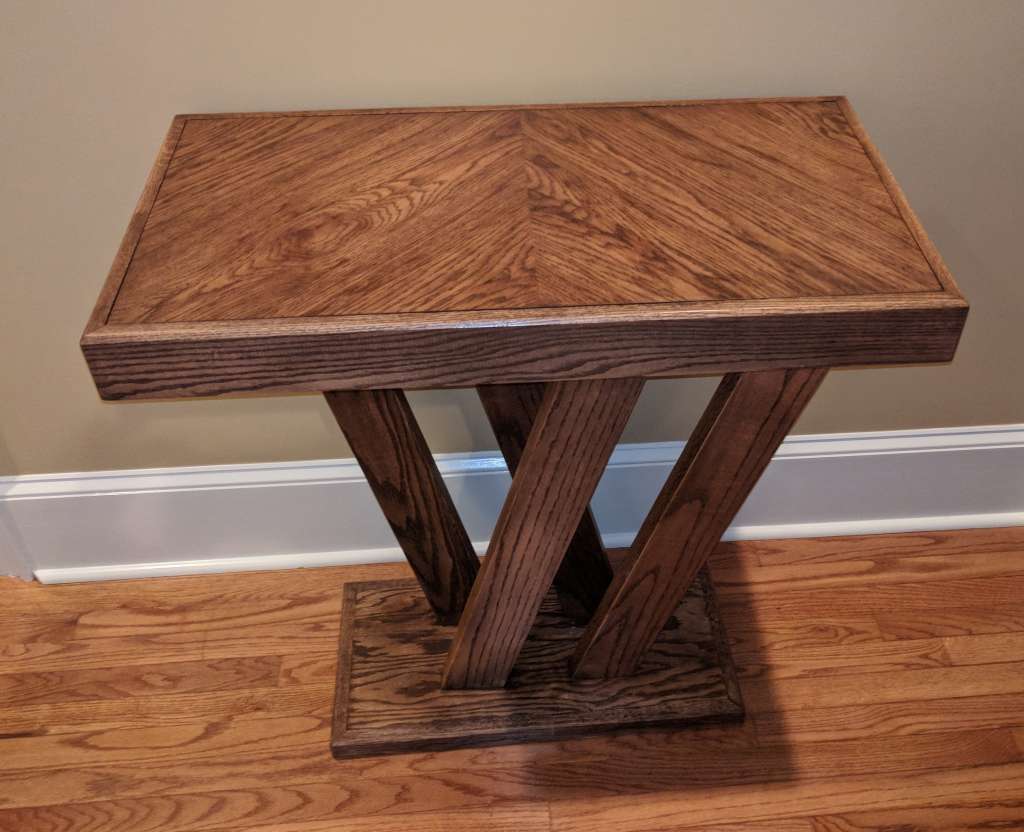
A young friend of ours always seemed to be cutting up logs and making things from them, so I wanted to encourage his interest in all things wood. Since he was getting married, I decided to make him and his new bride a hall table.
I found a contemporary table design that I liked, and since they seemed to like rustic furniture I choose to make it out of some old oak boards I had been saving for just such an occasion.
The top is made from two solid oak squares (not veneered plywood) with the grain running at 45 degree angles. The whole thing floats in some splines cut into a mitered wood frame to allow for expansion and contraction. The legs criss cross each other and are set into an oak plywood base.
Oak Table with Pull-Out Leaves
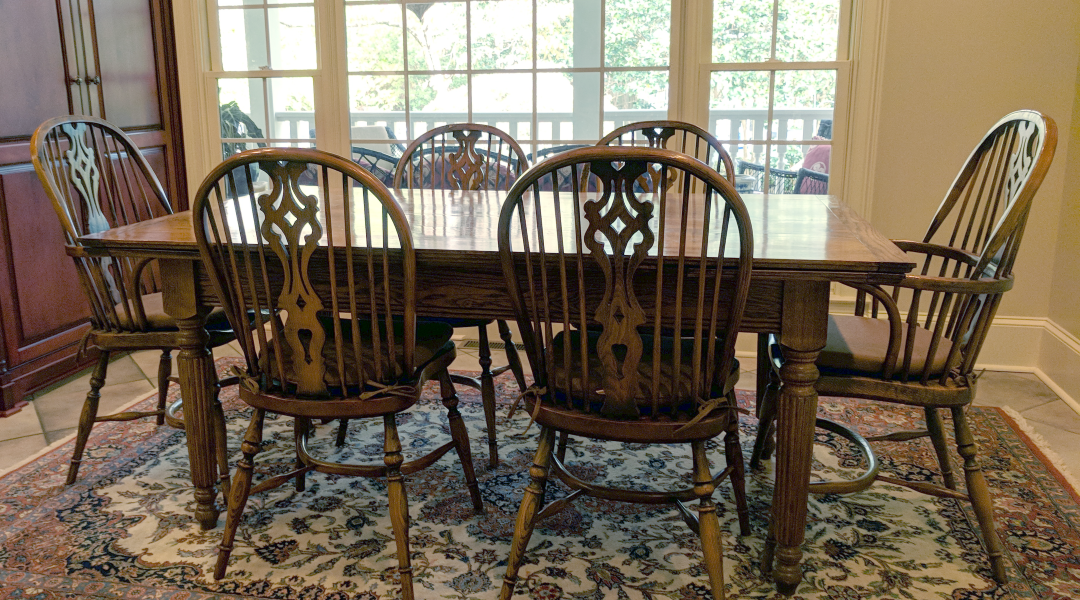
I built our kitchen table out of red oak. The legs were purchased online because I got rid of my craftsmen tube lathe. I plan on getting a better lathe one of these days as I love wood turning.
The top measures 70" x 43" and with both leaves extended it becomes 96" or a full 8 feet long. It features "breadboard" edges which allow for expansion and contraction of the table-top. The design of the pull out leaves was quite complex, as I was not working from any plans. The mechanism requires that the leaves pull out and up so they are level with the table top, all without changing the height of the table top.
We finished off the set by purchasing some English oak fiddle-back Windsor style chairs from an interior decorator. They were not cheap, but chair building is an art that I have yet to master. It has been in constant use as our kitchen table for more than 20 years, and still looks new. This highlights the fact that quality built furniture can last a lifetime.
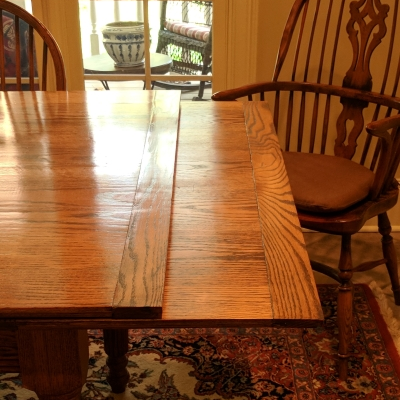
leaf half out
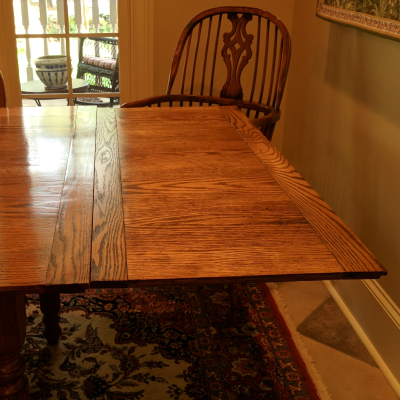
leaf full out
Walnut Barrel Top Desk
Over 35 years ago I built this walnut barrel top desk. We saw a similar desk which needed some work at an auction, but it went for way too much. So I decided to build my own.
The barrel top frame was made from band sawing thin strips of walnut and clamping them in a form. The center panels of the barrel top were built from walnut and birch veneers which were also pressed in a form. The barrel top slides in a semi-circular groove in the sides, and is hidden by some cubbies and a false back.
The drawers ride on wood slides and use no commercial hardware, just a thin coating of Johnson's paste wax.
The legs and drawer knobs were turned on the tube lathe that I no longer have. I really miss having a lathe!
The crown molding was fabricated on my table saw. I cut the cove on a diagonal and hand scraped the finish with a curved card scraper.
It has survived three moves. The movers from our most recent move to Georgia busted the crown molding at the top, which I have since repaired. Thankfully it is no worse for the wear.
